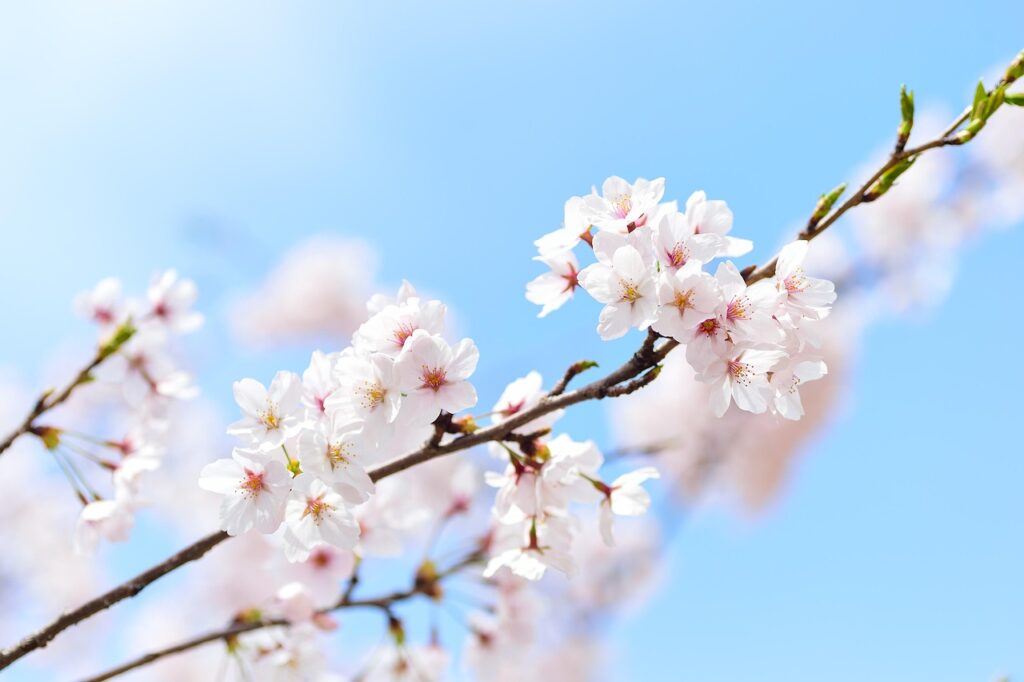Japan is a mesmerizing blend of ancient traditions and cutting-edge modernity. Its rich culture, delicious cuisine, and stunning landscapes make it a top destination for travelers worldwide.
If you’re planning a trip to Japan, here are some essential things you need to know to make the most of your visit.
1. Understanding Japanese Etiquette
Japanese society places a high value on etiquette and manners. Here are a few key points to keep in mind:
- Bowing: Bowing is a common greeting and sign of respect. The depth and duration of the bow depend on the context.
- Shoes: Always remove your shoes before entering a home, temple, or certain traditional accommodations like ryokan (Japanese inns).
- Queueing: Japanese people are known for their orderly queues. Whether waiting for a train or at a store, always follow the queue.
- Quietness: In public places like trains, speaking loudly is considered rude. Keep your phone on silent and have conversations quietly.
2. Navigating Public Transportation
Japan’s public transportation system is efficient and punctual. Here are some tips to navigate it:
- Japan Rail Pass: If you plan to travel extensively by train, consider purchasing a Japan Rail Pass. It offers unlimited travel on JR trains for a set period.
- IC Cards: IC cards like Suica and Pasmo can be used for trains, buses, and even shopping. They are rechargeable and can save you the hassle of buying tickets each time.
- Subways and Trains: Tokyo and other major cities have extensive subway and train networks. Apps like Hyperdia or Google Maps can help you plan your routes.
3. Accommodation Types
Japan offers a variety of accommodation options, each providing a unique experience:
- Ryokan: Traditional Japanese inns that offer tatami-matted rooms, communal baths, and kaiseki (multi-course) meals.
- Capsule Hotels: A budget-friendly option where you sleep in a small, pod-like space. It’s a unique experience but might not be suitable for claustrophobic individuals.
- Business Hotels: Affordable hotels that provide basic amenities and are conveniently located near train stations.
- Minshuku: Family-run guesthouses offering a homely experience and a chance to interact with locals.
4. Japanese Cuisine

Japanese food is renowned worldwide, and there’s much more to explore beyond sushi:
- Ramen: A flavorful noodle soup with various broths like shoyu (soy sauce), miso, and tonkotsu (pork bone).
- Sushi and Sashimi: Fresh fish and seafood, often served with rice or just sliced raw.
- Tempura: Lightly battered and deep-fried seafood and vegetables.
- Okonomiyaki: A savory pancake filled with ingredients like cabbage, meat, and seafood.
- Convenience Store Food: Japanese convenience stores (konbini) offer surprisingly high-quality ready-to-eat meals, snacks, and drinks.
5. Seasonal Highlights

Japan’s beauty changes with the seasons, each offering unique experiences:
- Spring (March to May): Cherry blossom (sakura) season is a must-see. Parks like Ueno in Tokyo and Maruyama in Kyoto are popular spots for hanami (flower viewing).
- Summer (June to August): Enjoy vibrant festivals (matsuri), fireworks, and the beauty of coastal areas. Be prepared for hot and humid weather.
- Autumn (September to November): Witness the stunning fall foliage (koyo) in places like Kyoto’s temples and Nikko’s national parks.
- Winter (December to February): Ski in the Japanese Alps or visit the snow monkeys in Nagano. Sapporo’s Snow Festival is also a major winter attraction.
6. Language and Communication
While English is not widely spoken, making an effort to learn a few basic phrases can go a long way:
- Thank you: Arigatou gozaimasu
- Excuse me: Sumimasen
- It’s okay: Daijoubu desu
- Please: Onegaishimasu
- Yes/No: Hai/Iie
- Do you speak English?: Eigo ga hanasemasu ka?
Carry a phrasebook or use translation apps like Google Translate to assist with communication.
7. Cultural Experiences

Immerse yourself in Japan’s rich culture through these activities:
- Tea Ceremony: Experience the traditional Japanese tea ceremony, a ritualistic way of preparing and drinking matcha (powdered green tea).
- Onsen: Visit a hot spring bath for relaxation and rejuvenation. Remember to follow the bathing etiquette, like washing before entering the communal baths.
- Kimono Rental: Rent a kimono and stroll through historic districts like Kyoto’s Gion or Tokyo’s Asakusa for an authentic experience.
- Sumo Wrestling: Watch a sumo match to witness Japan’s national sport, which is steeped in tradition and ritual.
8. Technology and Connectivity
Japan is known for its technological advancements. To stay connected:
- Pocket Wi-Fi: Rent a pocket Wi-Fi device to ensure you have internet access wherever you go.
- SIM Cards or eSIM: Purchase a SIM card or eSIM plan for your phone at the airport or convenience stores for data access.
- Cash and Cards: While credit cards are widely accepted in cities, some rural areas and smaller establishments may only take cash. ATMs at convenience stores often accept foreign cards.
9. Safety and Cleanliness
Japan is one of the safest countries in the world, with low crime rates. Additionally, the emphasis on cleanliness is evident everywhere:
- Trash Disposal: Public trash cans are rare. Carry a small bag for your garbage and dispose of it at your accommodation or designated areas.
- Emergency Services: In case of emergencies, dial 110 for police and 119 for fire and ambulance services.
10. Unique Shopping Experiences
Japan offers a variety of shopping options, from high-end fashion to quirky souvenirs:
- Department Stores: Visit major department stores like Isetan and Mitsukoshi for a wide range of products, including fashion, electronics, and gourmet food.
- 100 Yen Shops: These discount stores, like Daiso and Can Do, offer a plethora of items for just 100 yen each.
- Otaku Culture: Explore Akihabara in Tokyo for anime, manga, and gaming merchandise.
- Traditional Crafts: Purchase authentic Japanese crafts like pottery, lacquerware, and textiles as unique souvenirs.
11. Searching for Food
When using Google Maps to find restaurants in Japan, you can go the extra mile and search up the food you want to eat in Japanese.
This is because searching in English will only give you a limited amount of options while searching in Japanese will give you a lot more restaurant selections near you.
12. Cheap Supermarket Bentos

Similarly, if you are looking for cheap food options, rather than going to the convenience stores like Lawson, Family Mart or Seven Eleven, consider going to a big supermarket where they sell supermarket bentos for only a couple hundred yen. T
hey have the perfect blend of rice, meat, veggies and all sorts of side dishes so it’s definitely better value for your buck! Personally, the supermarket chain I recommend is Maruetsu.
13. Bring Good Walking Shoes
Don’t underestimate the amount of walking you’ll likely have to do. Japan’s train stations have a lot of stairs and it can be far to navigate from one platform to another. You’ll also have to do a lot of walking from place to place to see tourist sights so be prepared for your feet to hurt in the first couple of days.
You can mitigate this by bringing a pair of great walking shoes that will cushion your soles as you travel long distances.
14. The Queues…
In Japan, there are queues everywhere. Especially for famous restaurants, you’ll often find a queue out the door where Japanese locals will patiently wait a couple hours to be granted a seat.
If you don’t want to be waiting, make sure you go at awkward meal times to avoid the rush. I often went to popular restaurants around the 3pm-4pm mark where most people had already finished lunch and it was too early to have dinner. You can also go very early or very late, or call the restaurant to see if they accept recommendations.
15. Solo Travelers’ Haven

Japan is great for solo travelers and an introvert’s paradise. You can do most activities alone and nobody will give you weird looks since everyone minds their own business. Many restaurants also have partitions for solo diners to have some privacy.
On the other hand, this can also lead to loneliness at times since most people will not be the type to strike up a conversation out of the blue or speak to you longer than necessary. If that doesn’t sound like an issue for you, then that’s great! But it is also something to keep in mind.
Of course, if you find yourself needing to ask anything, most people will be happy to help!
Final Thoughts
Japan is a destination that captivates every visitor with its harmonious blend of tradition and innovation. By understanding and respecting its culture, navigating its cities efficiently, and exploring its unique experiences, you can ensure a memorable and enriching trip. Happy travels!
By incorporating these essential tips, you’ll be well-prepared to experience the best of what Japan has to offer. Whether it’s your first visit or a return trip, Japan always has something new and exciting to discover.
Check out other posts here.
